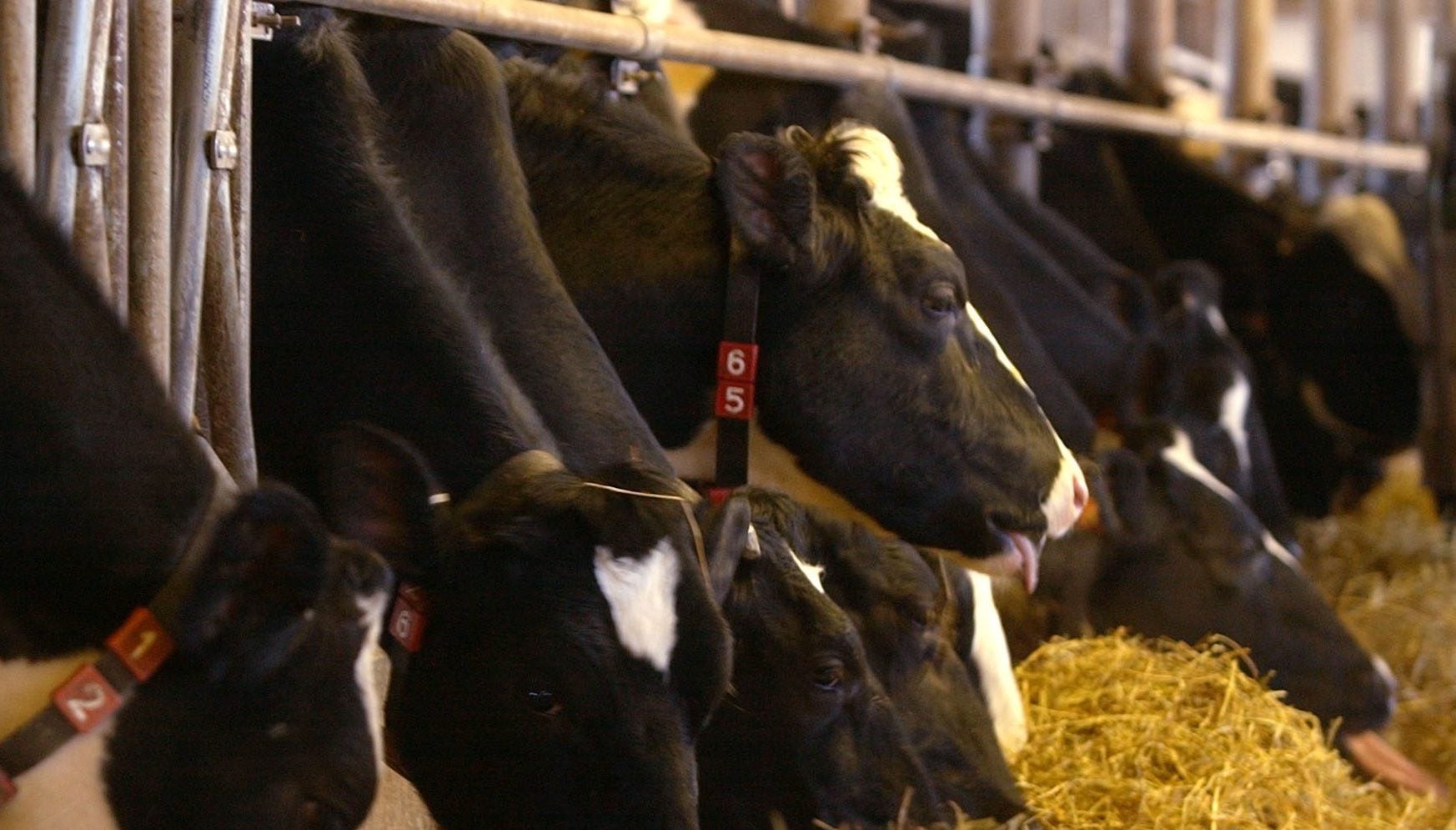Science
Jacobite Hero Bonnie Prince Charlie Gets a Fresh Face, Acne and All

He is one of the most romanticized figures in Scottish history: a charismatic young prince, born and raised in exile, who stirred a Jacobite uprising in the Scottish Highlands in a last-ditch attempt to restore his family to the British throne.
Though the 1745 uprising failed, the prince, Charles Edward Stuart, was immortalized in the popular imagination as a tragic hero, nicknamed Bonnie Prince Charlie for his good looks.
A new recreation of the prince’s face as it might have looked when he led the rebellion is now seeking to humanize the man behind the legend, pimples and all.
The recreation, made at the University of Dundee in Scotland, is a stark departure from how Prince Charles, as played by the actor Andrew Gower, has appeared on the hit television series “Outlander.” It is also a departure from traditional portraits that depicted him as a fresh-faced, rosy-cheeked young man.
Instead, the new recreation suggests Prince Charles, who was 24 when he led the uprising, had a plainer appearance, with thinner lips, sunken eyes and, yes, acne. It was produced by Barbora Veselá, a master’s student of forensic art and facial imaging, who said she aimed to create a realistic portrayal of the prince as a “regular person, without any sort of royal splendor.”
Ms. Veselá’s recreation is based on a 3-D model built from hundreds of detailed photographs of the prince’s death masks, which were cast after he died at 67 in 1788. She used digital sculpting software to reverse facial changes caused by aging, heavy drinking and the stroke that led to his death.
Unlike forensic facial reconstructions, historical reconstructions allow — and in some cases, require — researchers to take some creative liberties, Ms. Veselá said.
She based details that would not have been preserved in a death mask, such as the prince’s hair, on contemporaneous accounts and other likenesses believed to have been fairly faithful depictions. They include a bust made by the 18th-century French sculptor Jean-Baptiste Lemoyne, from which she took cues for her recreation’s chin-length curls.
Despite the prince’s reputation for being handsome and charismatic, Ms. Veselá said she had intentionally included blemishes that were noted in a few historical accounts in an effort to convey that he was not just a mythic hero, but also a “complex person, as we all are.”
“I don’t think he’s bad looking, I just think that beauty is very subjective, and we definitely have different beauty standards than they would have in the 18th century,” she said.
The facial shape and structure of the University of Dundee recreation are corroborated by many eyewitness accounts of the rebellion and are likely “quite realistic,” said Roderick Tulloch, a collector of Jacobite history who is working to establish a visitors’ center at the site of the Jacobites’ victory at the Battle of Falkirk Muir.
One account of the prince’s triumphant seizure of Edinburgh in September 1745, for example, said he had a high nose and long visage, and that “his chin was pointed and mouth small in proportion to his features.”
But Mr. Tulloch noted that the same account described the prince’s complexion as “ruddy,” in contrast with the sallow and blemished likeness produced by the University of Dundee. The prince is also shown with rosy cheeks in a portrait by the renowned Scottish artist Allan Ramsay that is regarded as one of the most accurate likenesses of him, especially compared with official portraits that may have embellished his features.
Even staunch opponents described the prince during this time as a good-looking man, Mr. Tulloch added. His charisma helped his cause — in a matter of months after arriving in Scotland, he rallied even skeptical Highland clans and assembled a force of thousands to fight the British army.
The romanticization of Prince Charles was also at least partly a response to the ruthlessness of the British forces, particularly at the Battle of Culloden in 1746, Mr. Tulloch said. An estimated 1,000 Jacobites were slaughtered at the battle, which lasted only about 40 minutes and marked the effective end of the rebellion.
The prince’s legend also grew from his subsequent dramatic escape from Scotland, which he managed with the help of a young local woman named Flora MacDonald, who disguised the fugitive prince as an Irish maid and smuggled him to safety by boat.
Considered a hero in her own right, MacDonald is seen bidding farewell to Prince Charles in a scene long memorialized on tins of shortbread sold by the Scottish brand Walker’s.
The story of the prince’s daring escape was also canonized in “The Skye Boat Song,” a folk tune that was adapted as the theme song for the “Outlander” television series.
The historical fantasy and romance series became a global phenomenon and has “done a huge amount to raise the profile of Scotland, Scottish history, and the Jacobites in particular,” Mr. Tulloch said.

Science
Cluster of farmworkers diagnosed with rare animal-borne disease in Ventura County

A cluster of workers at Ventura County berry farms have been diagnosed with a rare disease often transmitted through sick animals’ urine, according to a public health advisory distributed to local doctors by county health officials Tuesday.
The bacterial infection, leptospirosis, has resulted in severe symptoms for some workers, including meningitis, an inflammation of the brain lining and spinal cord. Symptoms for mild cases included headaches and fevers.
The disease, which can be fatal, rarely spreads from human to human, according to the U.S. Centers for Disease Control and Prevention.
Ventura County Public Health has not given an official case count but said it had not identified any cases outside of the agriculture sector. The county’s agriculture commissioner was aware of 18 cases, the Ventura County Star reported.
The health department said it was first contacted by a local physician in October, who reported an unusual trend in symptoms among hospital patients.
After launching an investigation, the department identified leptospirosis as a probable cause of the illness and found most patients worked on caneberry farms that utilize hoop houses — greenhouse structures to shelter the crops.
As the investigation to identify any additional cases and the exact sources of exposure continues, Ventura County Public Health has asked healthcare providers to consider a leptospirosis diagnosis for sick agricultural workers, particularly berry harvesters.
Rodents are a common source and transmitter of disease, though other mammals — including livestock, cats and dogs — can transmit it as well.
The disease is spread through bodily fluids, such as urine, and is often contracted through cuts and abrasions that contact contaminated water and soil, where the bacteria can survive for months.
Humans can also contract the illness through contaminated food; however, the county health agency has found no known health risks to the general public, including through the contact or consumption of caneberries such as raspberries and blackberries.
Symptom onset typically occurs between two and 30 days after exposure, and symptoms can last for months if untreated, according to the CDC.
The illness often begins with mild symptoms, with fevers, chills, vomiting and headaches. Some cases can then enter a second, more severe phase that can result in kidney or liver failure.
Ventura County Public Health recommends agriculture and berry harvesters regularly rinse any cuts with soap and water and cover them with bandages. They also recommend wearing waterproof clothing and protection while working outdoors, including gloves and long-sleeve shirts and pants.
While there is no evidence of spread to the larger community, according to the department, residents should wash hands frequently and work to control rodents around their property if possible.
Pet owners can consult a veterinarian about leptospirosis vaccinations and should keep pets away from ponds, lakes and other natural bodies of water.
Science
Political stress: Can you stay engaged without sacrificing your mental health?

It’s been two weeks since Donald Trump won the presidential election, but Stacey Lamirand’s brain hasn’t stopped churning.
“I still think about the election all the time,” said the 60-year-old Bay Area resident, who wanted a Kamala Harris victory so badly that she flew to Pennsylvania and knocked on voters’ doors in the final days of the campaign. “I honestly don’t know what to do about that.”
Neither do the psychologists and political scientists who have been tracking the country’s slide toward toxic levels of partisanship.
Fully 69% of U.S. adults found the presidential election a significant source of stress in their lives, the American Psychological Assn. said in its latest Stress in America report.
The distress was present across the political spectrum, with 80% of Republicans, 79% of Democrats and 73% of independents surveyed saying they were stressed about the country’s future.
That’s unhealthy for the body politic — and for voters themselves. Stress can cause muscle tension, headaches, sleep problems and loss of appetite. Chronic stress can inflict more serious damage to the immune system and make people more vulnerable to heart attacks, strokes, diabetes, infertility, clinical anxiety, depression and other ailments.
In most circumstances, the sound medical advice is to disengage from the source of stress, therapists said. But when stress is coming from politics, that prescription pits the health of the individual against the health of the nation.
“I’m worried about people totally withdrawing from politics because it’s unpleasant,” said Aaron Weinschenk, a political scientist at the University of Wisconsin–Green Bay who studies political behavior and elections. “We don’t want them to do that. But we also don’t want them to feel sick.”
Modern life is full of stressors of all kinds: paying bills, pleasing difficult bosses, getting along with frenemies, caring for children or aging parents (or both).
The stress that stems from politics isn’t fundamentally different from other kinds of stress. What’s unique about it is the way it encompasses and enhances other sources of stress, said Brett Ford, a social psychologist at the University of Toronto who studies the link between emotions and political engagement.
For instance, she said, elections have the potential to make everyday stressors like money and health concerns more difficult to manage as candidates debate policies that could raise the price of gas or cut off access to certain kinds of medical care.
Layered on top of that is the fact that political disagreements have morphed into moral conflicts that are perceived as pitting good against evil.
“When someone comes into power who is not on the same page as you morally, that can hit very deeply,” Ford said.
Partisanship and polarization have raised the stakes as well. Voters who feel a strong connection to a political party become more invested in its success. That can make a loss at the ballot box feel like a personal defeat, she said.
There’s also the fact that we have limited control over the outcome of an election. A patient with heart disease can improve their prognosis by taking medicine, changing their diet, getting more exercise or quitting smoking. But a person with political stress is largely at the mercy of others.
“Politics is many forms of stress all rolled into one,” Ford said.
Weinschenk observed this firsthand the day after the election.
“I could feel it when I went into my classroom,” said the professor, whose research has found that people with political anxiety aren’t necessarily anxious in general. “I have a student who’s transgender and a couple of students who are gay. Their emotional state was so closed down.”
That’s almost to be expected in a place like Wisconsin, whose swing-state status caused residents to be bombarded with political messages. The more campaign ads a person is exposed to, the greater the risk of being diagnosed with anxiety, depression or another psychological ailment, according to a 2022 study in the journal PLOS One.
Political messages seem designed to keep voters “emotionally on edge,” said Vaile Wright, a licensed psychologist in Villa Park, Ill., and a member of the APA’s Stress in America team.
“It encourages emotion to drive our decision-making behavior, as opposed to logic,” Wright said. “When we’re really emotionally stimulated, it makes it so much more challenging to have civil conversation. For politicians, I think that’s powerful, because emotions can be very easily manipulated.”
Making voters feel anxious is a tried-and-true way to grab their attention, said Christopher Ojeda, a political scientist at UC Merced who studies mental health and politics.
“Feelings of anxiety can be mobilizing, definitely,” he said. “That’s why politicians make fear appeals — they want people to get engaged.”
On the other hand, “feelings of depression are demobilizing and take you out of the political system,” said Ojeda, author of “The Sad Citizen: How Politics is Depressing and Why it Matters.”
“What [these feelings] can tell you is, ‘Things aren’t going the way I want them to. Maybe I need to step back,’” he said.
Genessa Krasnow has been seeing a lot of that since the election.
The Seattle entrepreneur, who also campaigned for Harris, said it grates on her to see people laughing in restaurants “as if nothing had happened.” At a recent book club meeting, her fellow group members were willing to let her vent about politics for five minutes, but they weren’t interested in discussing ways they could counteract the incoming president.
“They’re in a state of disengagement,” said Krasnow, who is 56. She, meanwhile, is looking for new ways to reach young voters.
“I am exhausted. I am so sad,” she said. “But I don’t believe that disengaging is the answer.”
That’s the fundamental trade-off, Ojeda said, and there’s no one-size-fits-all solution.
“Everyone has to make a decision about how much engagement they can tolerate without undermining their psychological well-being,” he said.
Lamirand took steps to protect her mental health by cutting social media ties with people whose values aren’t aligned with hers. But she will remain politically active and expects to volunteer for phone-banking duty soon.
“Doing something is the only thing that allows me to feel better,” Lamirand said. “It allows me to feel some level of control.”
Ideally, Ford said, people would not have to choose between being politically active and preserving their mental health. She is investigating ways to help people feel hopeful, inspired and compassionate about political challenges, since these emotions can motivate action without triggering stress and anxiety.
“We want to counteract this pattern where the more involved you are, the worse you are,” Ford said.
The benefits would be felt across the political spectrum. In the APA survey, similar shares of Democrats, Republicans and independents agreed with statements like, “It causes me stress that politicians aren’t talking about the things that are most important to me,” and, “The political climate has caused strain between my family members and me.”
“Both sides are very invested in this country, and that is a good thing,” Wright said. “Antipathy and hopelessness really doesn’t serve us in the long run.”
Science
Video: SpaceX Unable to Recover Booster Stage During Sixth Test Flight

President-elect Donald Trump joined Elon Musk in Texas and watched the launch from a nearby location on Tuesday. While the Starship’s giant booster stage was unable to repeat a “chopsticks” landing, the vehicle’s upper stage successfully splashed down in the Indian Ocean.
-

 Business1 week ago
Business1 week agoColumn: Molly White's message for journalists going freelance — be ready for the pitfalls
-

 Science6 days ago
Science6 days agoTrump nominates Dr. Oz to head Medicare and Medicaid and help take on 'illness industrial complex'
-

 Politics1 week ago
Politics1 week agoTrump taps FCC member Brendan Carr to lead agency: 'Warrior for Free Speech'
-
/cdn.vox-cdn.com/uploads/chorus_asset/file/25739950/247386_Elon_Musk_Open_AI_CVirginia.jpg)
/cdn.vox-cdn.com/uploads/chorus_asset/file/25739950/247386_Elon_Musk_Open_AI_CVirginia.jpg) Technology1 week ago
Technology1 week agoInside Elon Musk’s messy breakup with OpenAI
-

 Lifestyle1 week ago
Lifestyle1 week agoSome in the U.S. farm industry are alarmed by Trump's embrace of RFK Jr. and tariffs
-

 World1 week ago
World1 week agoProtesters in Slovakia rally against Robert Fico’s populist government
-

 Health3 days ago
Health3 days agoHoliday gatherings can lead to stress eating: Try these 5 tips to control it
-

 News1 week ago
News1 week agoThey disagree about a lot, but these singers figure out how to stay in harmony















